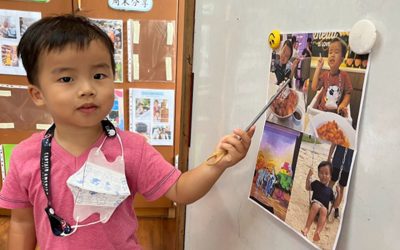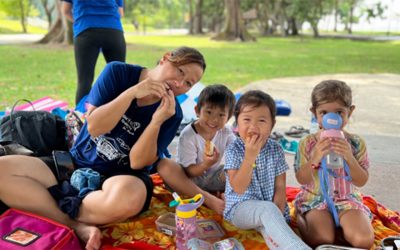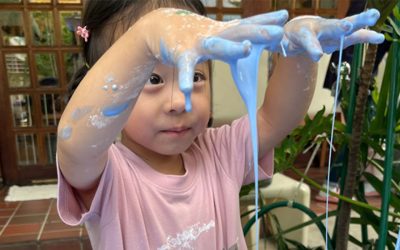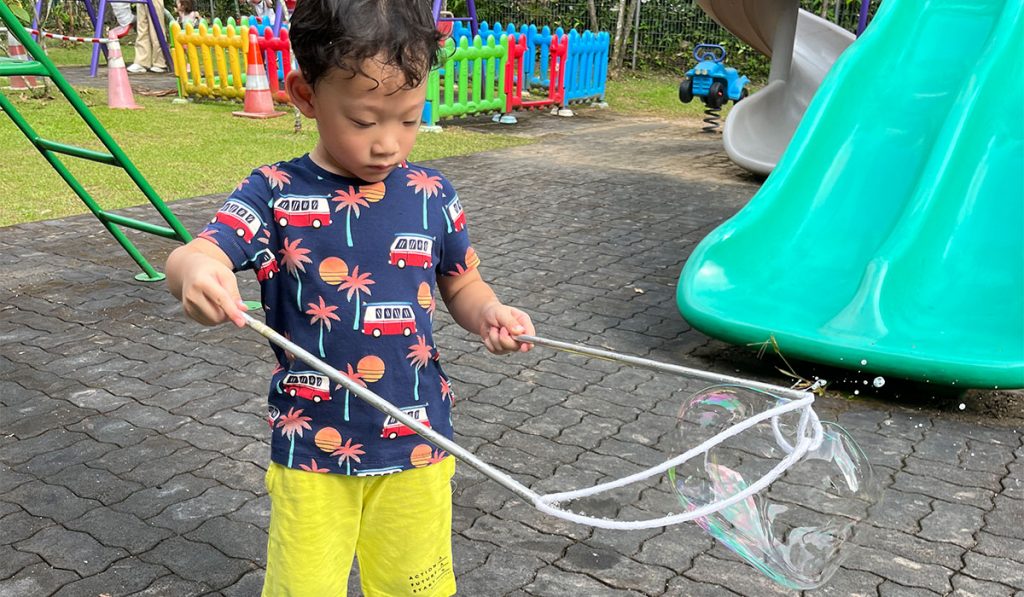
Looking for ways to make science more interesting and engaging for your kindergarten-aged child? We’ve got you covered!
As a parent, you’d want your child to be curious, confident, and eager to explore the world—science is a great way to tap their natural wonder. Through simple kindergarten science experiments, playful activities, and outdoor adventures, your child can discover how exciting learning science can be.
Best of all, you don’t need to rely on a kindergarten science textbook to spark their interest! Encourage them to ask questions, make predictions, and explore their surroundings. Doing so boosts their critical thinking and communication skills.
In this article, you’ll find ideas that make science fun and meaningful for your child, from creative lesson plans to outdoor activities. We’ll also share Heartfield Kindergarten’s educational philosophy on how science can inspire a lifelong love for learning.
Science Objectives for Kindergarten
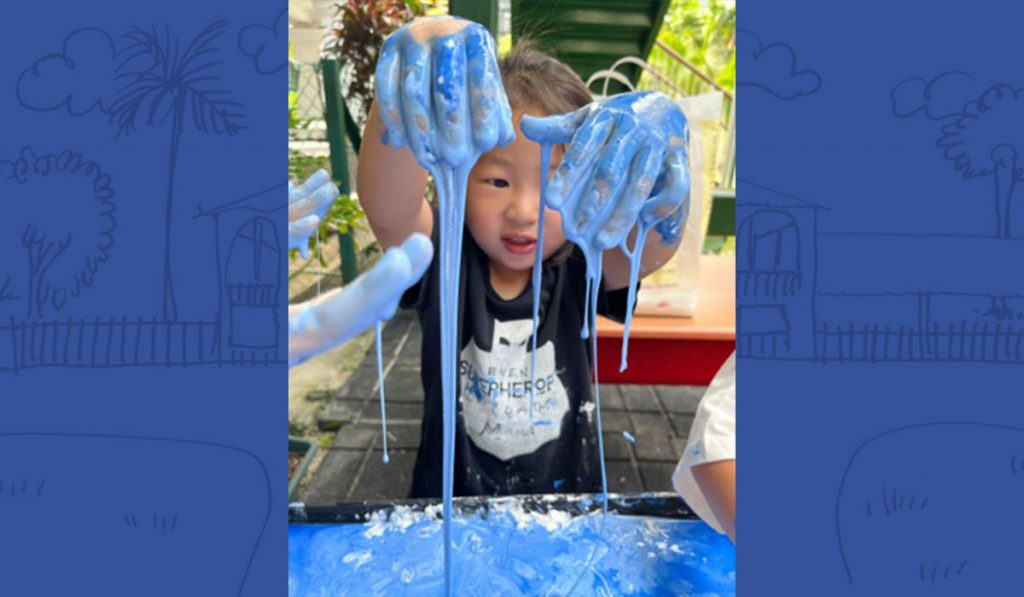
Introducing your preschooler to science at an early age nurtures their natural curiosity and desire to explore the world. It also develops essential executive function skills like problem-solving, observation, and communication.
At Heartfield Kindergarten, we encourage children to ask “why” and “how” questions. Such science process skills aid them in making sense of their surroundings through exploration and discovery. Science objectives help them understand basic scientific concepts, improve their ability to describe observations, and foster a love for lifelong learning.
The benefits of early science education include the following:
- Encourage critical thinking and analytical skills by teaching children to observe, predict, and test.
- Develop communication skills as children describe what they see and experience.
- Integrates with other domains—recording observations boosts literacy while measuring tasks in kindergarten science experiments strengthens numeracy.
- Promotes teamwork and social skills through group-based activities like discovering how vehicles move, or uncovering nature.
- Builds confidence as children achieve small successes through hands-on exploration.
For example, your child might observe how the weather changes throughout the week, helping them recognise patterns and discuss their findings. Growing plants introduces life science to your preschooler, teaching them about life cycles and how to care for living things. Simple activities, like mixing baking soda and vinegar, or exploring insects in the garden, help them grasp cause and effect in a tangible way.
Introducing Science Themes for Kindergarten
As early childhood educators, we’re challenged to make our kindergarten science curriculum theoretically sound yet rooted in reality. A good way to do so is through deploying the right themes.
Benefits of Science Themes
Science themes help us to organise learning into clear, engaging categories. By grouping lessons around familiar topics, like weather or animals, children can make better connections between what they learn and the world around them. Themes can be based on branches of science, like biology or physics, or natural phenomena, such as rain, seasons, or space.
Doing so helps children to:
- Connect scientific concepts to real-life experiences
- Stay curious and engaged with diverse topics
- Learn holistically by integrating science with language, art, and maths
For instance, a theme about plants can include reading stories about gardens, drawing flowers, or measuring plant growth.
Examples of Science Themes
Science themes can cover a wide range of topics. Let us explore some of them below:
#1 By Branches of Science
These themes help children dive into different scientific fields, making complex concepts accessible through fun activities.
- Biology: Explore plants, animals, and the human body through nature walks, gardening, and sensory activities. Children might plant seeds, observe insects, or learn about their five senses.
- Physics: Learn about light, shadows, and simple machines through play and experiments. Activities can include building simple ramps or using flashlights to create shadow puppets.
- Chemistry: Conduct simple experiments like mixing baking soda and vinegar to see reactions. Children can explore colour mixing with water or create homemade slime to understand chemical changes.
#2 By Natural Phenomena
These themes focus on how the natural world changes around us, helping children connect classroom learning to everyday experiences.
- Weather and Climate: Observe rain, sunshine, clouds, and wind to understand weather patterns. Kids can create weather charts, make rain gauges, or simulate clouds with cotton balls.
- Water and Its Properties: Explore floating, sinking, and the water cycle through hands-on activities. Simple experiments with objects in water or watching ice melt can spark curiosity.
- Earth and Space: Learn about day and night, seasons, and the moon by observing the sky. Activities include creating models of the solar system or charting the phases of the moon.
#3 Life and the Environment
These themes teach children about living things and how we interact with the environment.
- Insects and Mini-Beasts: Bug hunts, butterfly observation, and insect crafts help children learn about habitats and life cycles.
- Recycling and Sustainability: Introducing recycling science activities for preschoolers, such as sorting materials or creating crafts from recycled items, helps teach environmental responsibility.
- Gardening and Plant Life: Growing plants, learning about photosynthesis, and understanding the importance of sunlight and water.
#4 Fun, Everyday Science
These themes make science relatable by linking it to the children’s daily lives.
- Transportation: Explore how vehicles move, introducing basic physics concepts like motion and speed.
- All About Me: Learn about the human body, senses, and health through “all about me” science activities.
- Food and Cooking: Simple kitchen experiments like making ice cream or observing how yeast makes bread rise to introduce basic chemistry.
Applying Science Themes to Education
Some fun themes include a “mini-beast” week, where children hunt for bugs in the garden, observe insects through magnifying glasses, and create insect crafts. This hands-on approach introduces kids to insect science activities for preschoolers, helping them learn about habitats, life cycles, and the role insects play in the environment.
A “space explorer” theme allows children to embark on an imaginative journey through the solar system. They can learn about planets, stars, and the moon through storytelling, interactive models, and even glow-in-the-dark crafts.
Another popular theme could be “weather wonders”, where children track daily weather changes, create wind socks, or simulate rain clouds using cotton balls and water. This helps them understand weather patterns and climate in a way that feels connected to their everyday experiences.
Fun Science Experiments for Kindergarten
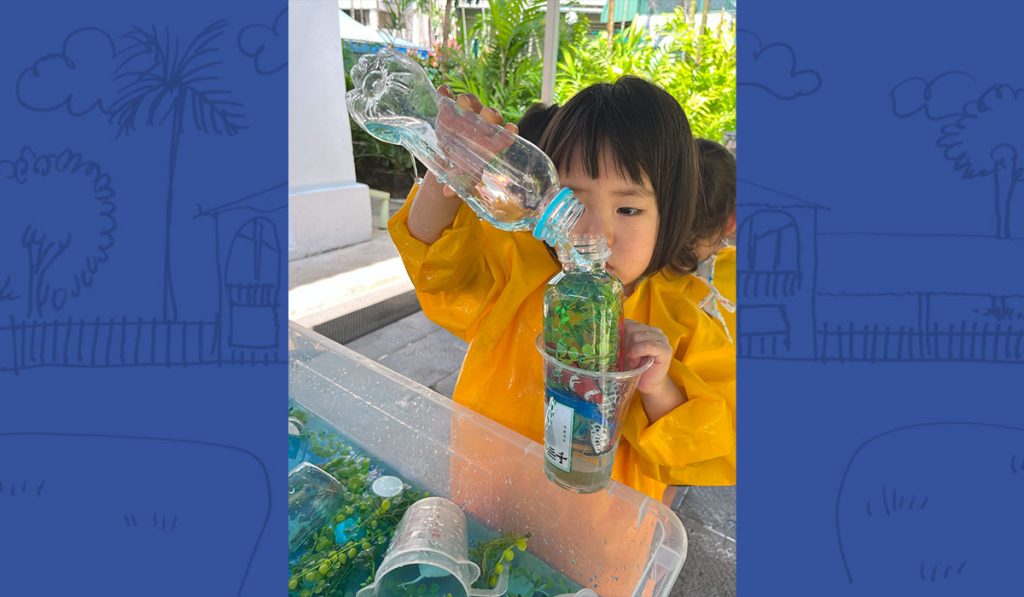
Experiments are wonderful ways to make science interactive and enjoyable for young children. They allow kids to hypothesise, test their ideas, and learn through direct, hands-on experiences. This beats passively receiving information through a book.
What Makes a Good Experiment?
At Heartfield Kindergarten, we focus on age-appropriate experiments that are safe, simple, and fun. These activities are designed to spark curiosity while reinforcing key scientific concepts. From mixing ingredients to observing chemical reactions, to exploring the properties of water, each experiment offers a playful introduction to basic science.
Benefits of Science Experiments
Incorporating fun science experiments for preschoolers into their daily activities can be highly beneficial for their development:
- Builds motor skills through hands-on tasks like pouring, mixing, and sorting materials
- Enhances cognitive development by teaching cause and effect through trial and error
- Reinforces communication skills as children describe their observations and share outcomes with peers and teachers
- Integrates other domains such as literacy (recording results) and numeracy (measuring ingredients), strengthening overall learning
Examples of Fun Science Experiments
Here are a few simple yet exciting experiments that bring scientific concepts to life. You can try them out for yourself at home!
#1 Make a Rainbow: Shine light through a glass of water to teach children about light refraction. This visually captivating experiment helps kids understand how rainbows form in nature.
#2 DIY Lava Lamp: Create a simple lava lamp using oil, water, and food colouring to introduce the concept of density. Watching the colourful blobs rise and fall fascinates children while teaching them about liquid properties. This is a great way to introduce the concept of density.
#3 Freezing Liquids: Freeze different types of liquids (like water, juice, or milk) to explore how various substances change states from liquid to solid. This helps children understand temperature effects and states of matter. You can also melt old bits of crayons and make giant ones or turn them into candles!
#4 Float or Sink? Gather everyday objects and let children predict whether they will float or sink in water. This classic kindergarten science experiment with water teaches buoyancy while encouraging kids to form and test hypotheses. This can be expanded to allow the child to search your home for things they might expect to sink/float. Will an orange float or sink? Why?
#5 Dancing Raisins: Mix baking soda and vinegar to create a fizzy eruption, introducing children to basic chemical reactions. Add raisins and watch them float to the surface. How are they doing this? Try this with other powders (like flour and salt), does the liquid bubble? Why not?
Outdoor Science Adventures
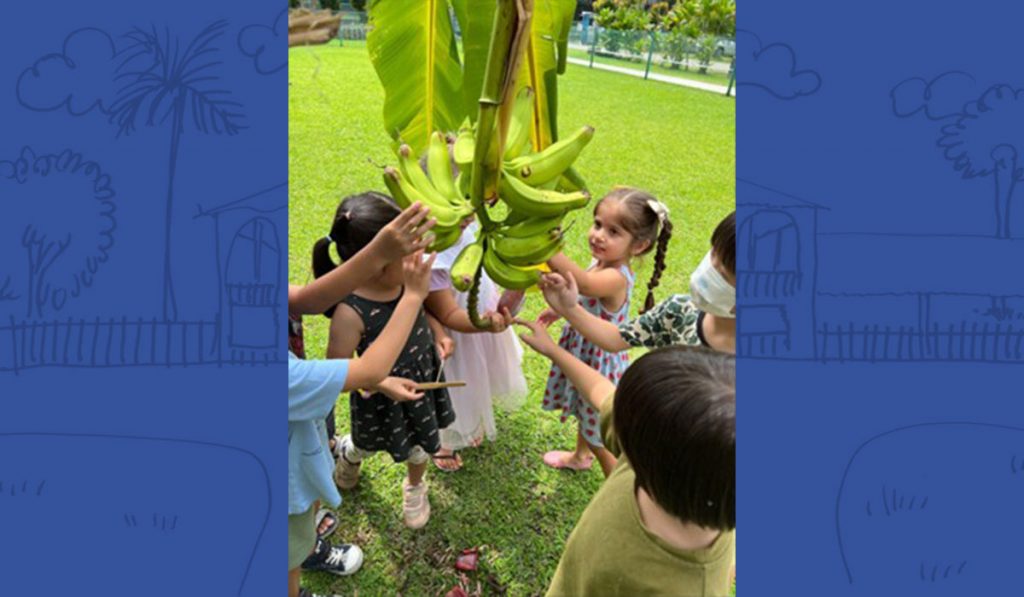
Outdoor exploration gives children the chance to engage directly with nature, offering a sensory-rich environment that sparks curiosity and fosters scientific inquiry. Being outside allows kids to observe natural processes in real time, helping them to appreciate scientific concepts like life cycles, weather patterns, and ecosystems. It cultivates environmental awareness from a young age, encouraging children to appreciate and care for the world around them.
What Outdoor Science Looks Like
At Heartfield Kindergarten, outdoor science adventures are a big part of our curriculum. Our gardens, sensory paths, and outdoor play areas turn into living classrooms where children can explore, experiment, and make exciting discoveries. Kids get hands-on with nature, whether hunting for bugs, planting seeds, or playing with water. These adventures make science feel less like a subject and more like a thrilling quest.
Benefits of Outdoor Science
Taking science outside offers a range of developmental and educational benefits:
- Encourages physical activity while engaging children’s senses in hands-on learning
- Builds a deeper connection with nature, helping children understand ecosystems and environmental responsibility
- Promotes independent thinking and confidence as children explore their surroundings and make their own discoveries
- Enhances observation skills by exposing children to real-world examples of scientific concepts
Examples of Outdoor Science Adventures
Here are some of the ways we bring science to life outdoors:
#1 Nature Scavenger Hunts
Children collect leaves, stones, flowers, and other natural items, then classify them based on colour, shape, or texture. This sharpens their observation skills while introducing basic biological classification.
#2 Hands-On Gardening
Kids plant seeds and water plants, and observe their growth over time. Such hands-on experience introduces life science for preschoolers, teaching them about plant life cycles, photosynthesis, and the importance of caring for living things.
#3 Exploring Creepy Crawly Insects
Here, children search for bugs in the garden as they learn about their different habitats and the role insects play in the environment. Activities like building bug hotels or observing ant trails make insect science activities for preschoolers both educational and fun.
#4 Weather Watch
Observing clouds, measuring rainfall, or feeling the wind helps children understand weather patterns and climate. They can create weather journals or simple tools like rain gauges to track their observations.
Heartfield’s Holistic Hands-On Approach to Science Education
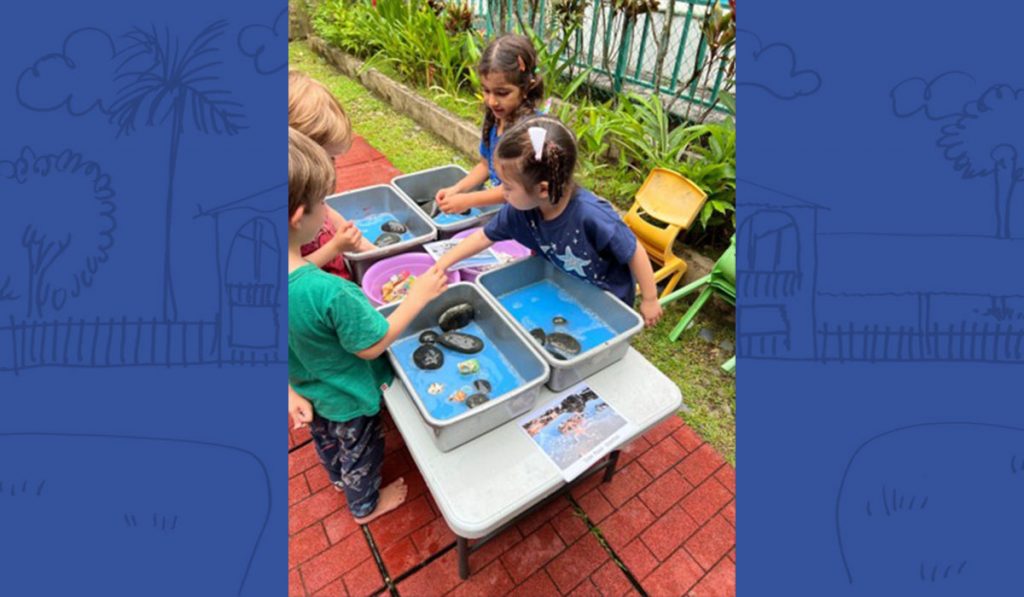
At Heartfield Kindergarten, science is woven into daily routines through play, storytelling, and thematic activities. Children participate in hands-on exploration using multi-sensory discovery stations and outdoor activities, helping them grasp scientific concepts through direct experience.
We encourage our children to ask questions and conduct experiments to find answers. This fosters critical thinking from an early age. Learning extends beyond the classroom—our sprawling garden, playground, and other spaces provide real-world contexts for observation and discovery.
Science concepts are introduced in both English and Mandarin during circle time and story sessions, supporting bilingual development alongside scientific understanding. Cooking activities, such as mixing and measuring ingredients, reinforce scientific thinking while promoting independent and collaborative learning.
Technology plays a role too. We introduce ICT (Information and Communication Technology) tools like cameras, weighing scales, and magnifying glasses to enhance the learning experience.
Located at 31 Balmoral Road, we invite you to visit us to learn more. Contact us at +65 6835 2354, email info@HeartfieldKindergarten.com, or visit our website to arrange a visit.
